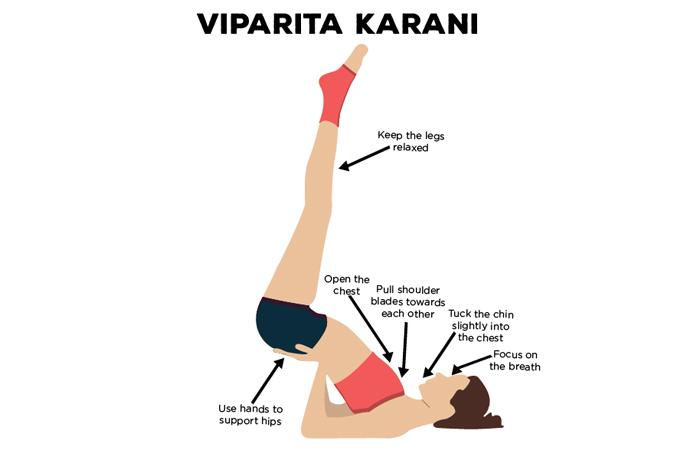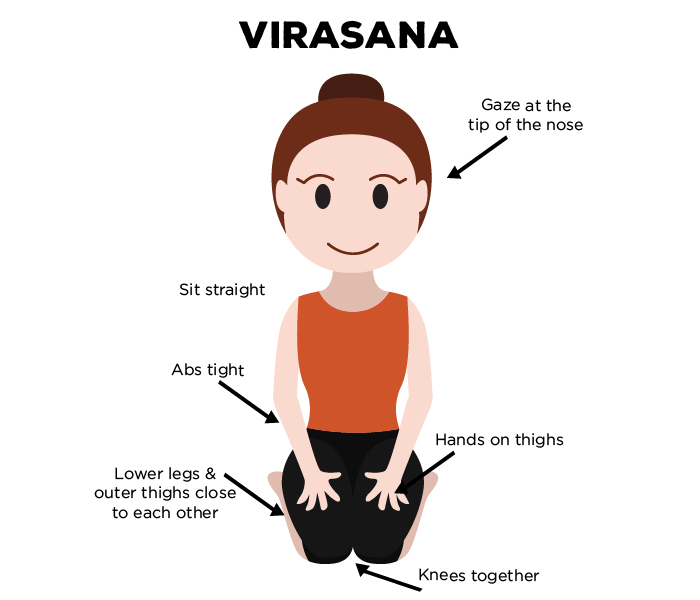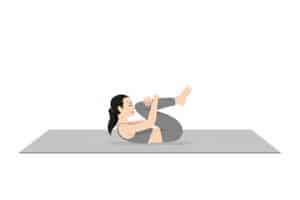Nausea can be a common and unpleasant sensation that many of us experience at some point in our lives. Whether it’s due to motion sickness, pregnancy, illness, or other factors, dealing with nausea can be challenging. However, practicing some yoga poses can help alleviate feelings of nausea and promote a sense of calm and balance in the body.
In this blog post, we will explore some of the best yoga poses for nausea that you can incorporate into your daily routine to help you feel more at ease and centered.
What is nausea?
Experiencing nausea is a common discomfort characterized by a queasy feeling in the upper stomach and a potential urge to vomit. Nausea may manifest on its own or in conjunction with symptoms like dizziness, sweating, abdominal cramps, or headaches.
Although nausea is not an independent medical condition, it can indicate underlying issues that range from minor to serious. It is advisable to consult a healthcare professional if symptoms are persistent or accompanied by severe symptoms. Treatment strategies may involve making lifestyle adjustments like consuming smaller, more frequent meals and avoiding specific triggers. In more severe cases, medication might be necessary to alleviate symptoms effectively.
How Indigestion May Lead To Many Health Problems?
Proper digestion is crucial for maintaining a healthy body. The process begins in the mouth, where food is broken down by saliva. It then moves to the stomach and intestines, where it is further digested and absorbed by the body. Waste products are eliminated through defecation.
Poor digestion can lead to various health issues like bloating, stomach pain, acidity, constipation, and diarrhea. Therefore, it is essential to maintain good eating habits and lifestyle choices to support a healthy digestive system.
Yoga can also play a significant role in promoting digestion and overall wellness. Certain yoga poses can help relax the body, mind, and nervous system, which in turn can alleviate digestive issues. In particular, practicing a calming full-body yoga pose can aid in improving digestion and reducing symptoms like nausea. By incorporating these poses into your routine, you can support your digestive health and overall well-being.
5 Best Yoga Poses For Nausea
Yoga is a wonderful practice that promotes holistic health and wellness. For individuals dealing with nausea, specific yoga poses can offer relief. The technique of Pranayama breathing, a fundamental aspect of yoga, is especially effective in alleviating nausea by activating the central nervous system and enhancing communication with the peripheral nerves. Furthermore, incorporating different yoga postures into your routine can help ease digestive issues and release tension in the abdominal area, contributing to overall well-being.
Here are some yoga poses to get rid of nausea.
1. Supta Virasana

Discover the Power of Supta Virasana for Nausea Relief in Yoga
Suffering from nausea can be a real downer, impacting your daily life and leaving you restless. If you’re seeking quick relief, consider adding Supta Virasana to your yoga practice. This pose is known for its effectiveness in alleviating nausea symptoms.
During Supta Virasana, the weight of the diaphragm is lifted off the liver and stomach, creating more space for these organs to recover. This allows for improved circulation and helps reduce stress and tension in the body. When paired with deep breathing, Supta Virasana can provide immediate relaxation, helping you feel more at ease and alleviating stomach discomfort.
By incorporating this simple yet powerful yoga pose into your routine, you can find relief from nausea and regain your sense of well-being. Give Supta Virasana a try and experience the benefits firsthand.
2. Viparita Karani

Discover the Health Benefits of the Feet Up Wall Pose
Have you ever considered trying the feet-up wall Wall Pose? This simple yet incredible exercise can have a positive impact on your health in various ways. Known as Viparita Karani or Legs Up the Wall Pose, this yoga pose is renowned for its ability to relax and rejuvenate both the mind and body.
The foot-up wall Wall Pose is particularly effective for reducing swelling in the ankles and feet. It is a beginner-friendly yoga pose that does not require exceptional strength or flexibility. Incorporating this relaxing exercise into your daily routine can help you combat fatigue and stress. For optimal results, practice this pose in the morning and evening on an empty stomach.
What are the benefits of Viparita Karani?
This yoga pose offers deep relaxation benefits that help calm the nervous system, reducing stress and anxiety. It promotes improved circulation and vein drainage, which can alleviate tension and fatigue in the legs, feet, and hips. Transitioning legs in this pose has long been recognized as an effective method to reduce swelling and discomfort in the lower body.
Furthermore, these specific yoga poses are particularly beneficial for alleviating nausea and addressing stomach issues. By practicing this pose, individuals can also effectively manage ankle and foot swelling (edema) caused by factors such as pregnancy, prolonged standing or sitting, and extensive walking. Embracing this beneficial practice can offer solutions to a range of health concerns.
3. Virasana

Prepare thoroughly for practicing this yoga pose to ensure proper execution and alignment. Find the right sitting depth and customize the position to suit your individual joints and body.
Virasana yoga offers a multitude of benefits for both the body and stomach. It is a gentle yoga pose that is suitable for elderly practitioners and safe for pregnant women. Athletes looking to enhance their strength and endurance can benefit from incorporating Virasana into their routine.
This pose is particularly helpful for individuals with chronic leg pain and stiffness, as well as those who frequently experience gastrointestinal issues like bloating and constipation. It is also recommended for individuals who struggle to sit cross-legged during yoga practice or maintain proper posture.
Women experiencing discomfort from menopausal symptoms can find relief through practicing Virasana. By incorporating this pose into your yoga practice, you can address a variety of physical issues and improve your overall well-being.
What are the benefits of Virasana?
Yoga poses can be incredibly beneficial for managing nausea and improving overall flexibility. These poses specifically target the ankles, knees, and thighs, helping to alleviate pain and stiffness. Additionally, they aid in digestion, reducing bloating and gas discomfort.
One such pose that is particularly effective for improving circulation in the legs and back is Virasana. This asana can also help reduce foot and general fatigue, making it a great choice for athletes looking to enhance endurance and performance.
Moreover, Virasana is ideal for individuals who spend prolonged periods sitting, as it can alleviate high blood pressure and improve lung function. Those suffering from asthma or shortness of breath may also find relief through regular practice of this pose. Overall, incorporating Virasana into your routine can help ease foot discomfort and promote overall well-being.
4. Baddha Konasana:

The Baddha Konasana, also known as the Bound Angle Pose, is a seated yoga posture that focuses on bringing your knees to the ground and your head close to or in front of your feet, while keeping your torso flat against your thighs. It’s important to approach this pose with patience and mindfulness, aiming to make gradual progress with each step towards achieving the full expression of the pose.
As you gently lean forward in Baddha Konasana, allow your heart to stay open and maintain a degree of flexibility that feels comfortable for you. Avoid forcing yourself into the pose and instead focus on listening to your body’s limits. Remember to round out your back and release your head only to the extent that feels right for you.
To deepen the pose, focus on dropping the top of your thighbones towards the floor, which will naturally lead your knees to follow. Stay in Baddha Konasana for 1 to 5 minutes, or at least 20 breaths, breathing steadily through your nose. Slowly release the pose with gentle awareness and respect for your body’s boundaries.
What are the benefits of Baddha Konasana?
This yoga routine focuses on stretching the groin and inner thighs, promoting flexibility in the knees, ankles, feet, and hips. The practice also emphasizes pelvic opening, making it a beneficial prenatal exercise that can help alleviate menstrual issues.
In addition to its physical benefits, this yoga sequence may assist in relieving stomach problems that have been challenging to address through traditional medical treatments. It is particularly useful for improving urinary disorders, easing tension in the groin, hips, and thighs, and benefiting the lumbar region.
Furthermore, this routine can be advantageous for individuals with flat feet, high blood pressure, infertility, and asthma. By incorporating these poses regularly into your practice, you can experience a range of health benefits and enhance your overall well-being.
5. Pawanmuktasana:

Pawanmuktasana, also known as the Wind-Relieving Pose, is a beneficial yoga pose for combating nausea and promoting overall fitness. Regular practice of this pose can help prevent and alleviate flatulence issues. By incorporating Pawanmuktasana into your routine, you can gradually alleviate gas problems and improve your digestive power, leading to relief from indigestion, heartburn, constipation, and nausea.
For individuals dealing with diabetes or liver disease, Pawanmuktasana can serve as an effective remedy. Additionally, those looking to reduce belly fat can also benefit from practicing this pose consistently.
To perform Pawanmuktasana correctly, begin by lying down and extending your legs forward with your toes turned outward and your hands resting alongside your body. Lift your right leg slowly from the knee, bringing it up towards your chest. Position your hands two inches below the knee, with your right hand on the left elbow and your left hand on the right elbow. Apply gentle pressure to your chest while holding this position for 30 seconds. Repeat the same steps with your left leg, completing one set. Aim to complete 5-8 sets or more.
It is important to note that when practicing Pawanmuktasana, always lift your right leg first. This is crucial, as lifting the left leg first can lead to the accumulation of air in the colon, causing discomfort. By following this sequence, you can ensure the proper release of air and experience the full benefits of this yoga pose.
Read also:
The Bottom Line
The ultimate takeaway is that practicing yoga asanas is a highly beneficial physical activity that serves as a cornerstone of maintaining wellness. Engaging in yoga exercises is essential, not just for combating nausea but also for enhancing your overall physical health and vitality.
DISCLAIMER: THIS WEBSITE DOES NOT PROVIDE MEDICAL ADVICE
The information, including but not limited to, text, graphics, images, and other material contained on this website, is for informational purposes only. No material on this site is intended to be a substitute for professional medical advice, diagnosis, or treatment. Always seek the advice of your physician or other qualified health care provider with any questions you may have regarding a medical condition or treatment before undertaking a new health care regimen, and never disregard professional medical advice or delay in seeking it because of something you have read on this website.

